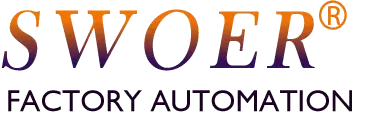Assembly machines encompass a broad range of equipment. Here are the primary classifications:
- Classified by Degree of Automation
- Manual Assembly Workstations
- Description: Operators perform all assembly tasks, possibly with the aid of tooling and part-presentation fixtures.
- Characteristics: Highest flexibility, lowest initial cost, but efficiency and quality depend on the operator.
- Semi-Automatic Assembly Machines
- Description: The machine handles specific repetitive or high-precision steps, while an operator loads/unloads or performs key inspections.
- Characteristics: Balances flexibility and efficiency; a common upgrade path.
- Fully Automatic Assembly Machines
- Description: The entire process is automated, from feeding and positioning to assembly, inspection, and unloading, typically controlled by a PLC.
- Characteristics: Highest efficiency and consistency, ideal for high-volume production, but requires high initial investment and has lower changeover flexibility.
- Flexible Assembly Systems
- Description: An advanced form of automatic assembly, integrating industrial robots and vision systems. They can quickly switch between different products via software.
- Characteristics: Combines high automation with high flexibility; a core component of smart manufacturing.
- Classified by Core Process Technology
- Press-Fit Assembly Machines: Use force to press components into place.
- Fastening/Screwdriving Machines: Automatically drive screws and nuts.
- Dispensing/Gluing Machines: Precisely apply adhesives or sealants before assembly.
- Riveting Assembly Machines: Join parts using riveting techniques.
- Welding Assembly Machines: Permanently join parts using methods like laser, ultrasonic, or hot plate welding.
- Potting/Encapsulation Machines: Encapsulate assembled products for protection and insulation.
III. Classified by Industry and Application
- Electronics & Electrical Assembly Machines: For assembling phones, PCBs, connectors, micro-motors.
- Automotive Components Assembly Machines: For assembling engine components, sensors, lights, pumps, valves.
- Medical Device Assembly Machines: For assembling syringes, IV sets, pacemakers, requiring extreme precision and cleanliness.
- Consumer Goods Assembly Machines: For assembling lighters, pens, razors, cosmetic packaging.
